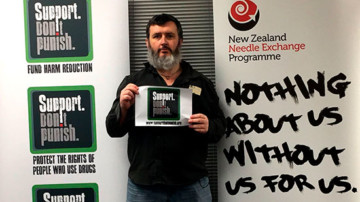
Death Penalty 100/100
1 Does the country retain the death penalty for drug offences? No
source: Harm Reduction International (2021), THE DEATH PENALTY FOR DRUG OFFENCES: GLOBAL OVERVIEW, Available online at: https://www.hri.global/death-penalty-2020
New Zealand is not listed as one of the states that retains the death penalty for drug offences in Harm Reduction International's (2021) The Death Penalty for Drug Offences: Global Overview 2020.2 What is the extent of death penalty application for drug offences in the country? N/A
source: Harm Reduction International (2021), THE DEATH PENALTY FOR DRUG OFFENCES: GLOBAL OVERVIEW, Available online at: https://www.hri.global/death-penalty-2020
Not ApplicableExtra-Judicial Killing 100/100
3 To what extent is the practice of extra-judicial killing prevalent in the course of military and police anti-drug activity? Not at all
source: Survey of Experts in States' Drug Policy
This score reflects the median result (weighted by topic confidence level) of the GDPI survey of experts in state drug policy.Militarised Policing 100/100
4 To what extent are military or special security forces are involved in drug operations? Not at all
source: Survey of Experts in States' Drug Policy
This score reflects the median result (weighted by topic confidence level) of the GDPI survey of experts in state drug policy.Life Sentencing 58/100
5 Is there provision in legislation or sentencing frameworks for the imposition of life imprisonment for drug offences? Yes
source: GDPI Coding Team.
According to the Misuse of Drugs Act 1975 (6.2a): those who commit offences in relation to Class A drugs are liable to be sentenced to lifetime imprisonment.6 Where there is provision in legislation or sentencing frameworks for the imposition of life imprisonment for drug offences, what is the nature of such sentences? Life Without Parole
source: GDPI Coding Team.
New Zealand implements both Life With Parole and Life Without Parole for drug offences. The coding here relects the harsher of these sentences.7 How frequently are formal life sentences imposed for drug use and personal possession offences? Never
source: Survey of Experts in States' Drug Policy
This score reflects the median result (weighted by topic confidence level) of the GDPI survey of experts in state drug policy.8 How frequently are formal life sentences imposed for drug supply offences (production, dealing, or trafficking)? Very Rarely
source: Survey of Experts in States' Drug Policy
This score reflects the median result (weighted by topic confidence level) of the GDPI survey of experts in state drug policy.Non-consensual confinement 75/100
9 To what extent is there a practice of non-consensual confinement in compulsory drug treatment centres? To a small extent
source: Survey of Experts in States' Drug Policy
This score reflects the median result (weighted by topic confidence level) of the GDPI survey of experts in state drug policy.
